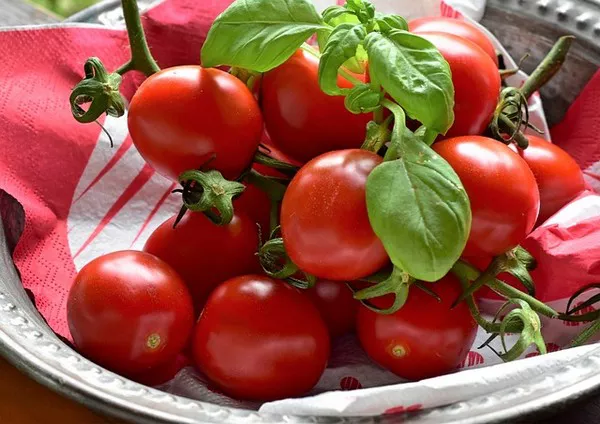Tomatoes are one of the most popular and rewarding crops to grow in home gardens. Their vibrant red fruits not only add color to our meals but also provide essential nutrients. However, for many gardeners, the excitement of seeing tomato plants flower often turns into disappointment when those flowers fail to produce fruit. This phenomenon, known as “flowering but not fruiting,” can be frustrating and puzzling. In this article, we will delve into the reasons behind this issue and explore possible solutions.
The Importance of Fruit Set
Before delving into the reasons for poor fruit set in tomato plants, it’s essential to understand the process of fruit formation. Tomatoes, like many other flowering plants, rely on pollination for successful fruit set. Once the flowers are pollinated, they develop into fruits containing seeds. Factors such as temperature, humidity, pollinator activity, and plant health play crucial roles in this process.
Reasons for Flowering but Not Fruiting
1. Poor Pollination:
One of the most common reasons for tomatoes flowering but not setting fruit is poor pollination. Tomatoes are primarily self-pollinating, but they can benefit from the presence of pollinators like bees and other insects. If there is a lack of pollinators in your garden or if weather conditions are unfavorable for pollination (such as excessive rain or high winds), the flowers may not be adequately pollinated, leading to poor fruit set.
2. Temperature Extremes:
Temperature extremes, both high and low, can disrupt the pollination process and inhibit fruit set in tomato plants. High temperatures (above 90°F/32°C) can cause pollen to become sterile, while low temperatures (below 55°F/13°C) can hinder pollinator activity. Fluctuations in temperature can also stress the plants, affecting their ability to set fruit.
3. Nutrient Imbalance:
Tomatoes are heavy feeders and require adequate nutrients to support fruit development. A deficiency or imbalance of essential nutrients, particularly phosphorus and potassium, can hinder fruit set. Ensure that your plants are receiving a balanced fertilizer regimen and amend the soil with organic matter to improve nutrient availability.
4. Water Stress:
Inconsistent watering practices can also contribute to poor fruit set in tomato plants. Both underwatering and overwatering can stress the plants and disrupt the pollination process. Maintain consistent soil moisture levels by watering deeply and evenly, particularly during the flowering and fruiting stages.
5. Pruning Practices:
While pruning can help manage plant growth and improve airflow, excessive pruning can also remove potential fruiting sites and reduce overall yield. Avoid excessive pruning, especially during the flowering stage, to ensure an adequate number of flower clusters for fruit production.
6. Varietal Characteristics:
Some tomato varieties are more prone to poor fruit set than others. Factors such as genetics, growth habits, and fruiting patterns can influence a plant’s ability to set fruit. When selecting tomato varieties for your garden, consider choosing those known for their reliable fruit set in your specific growing conditions.
7. Pest and Disease Pressure:
Pest infestations and diseases can also interfere with fruit set in tomato plants. Common pests such as aphids, whiteflies, and thrips can damage flowers and reduce pollination rates. Additionally, diseases such as blossom end rot and bacterial spot can affect fruit development. Implement integrated pest management strategies to control pest and disease pressure in your garden.
Solutions and Recommendations
1. Encourage Pollinator Activity:
To improve pollination rates, encourage the presence of pollinators in your garden by planting pollinator-friendly flowers and avoiding the use of pesticides harmful to bees and other beneficial insects.
2. Provide Optimal Growing Conditions:
Maintain optimal growing conditions for tomato plants, including adequate sunlight, well-drained soil, and proper air circulation. Monitor temperature and humidity levels to minimize stress on the plants.
3. Fertilize Appropriately:
Ensure that your tomato plants are receiving adequate nutrients by fertilizing them with a balanced fertilizer according to the recommended application rates. Conduct soil tests to identify any nutrient deficiencies and amend the soil as needed.
4. Water Consistently:
Practice consistent watering habits to avoid water stress in tomato plants. Water deeply and evenly, and mulch around the plants to conserve moisture and regulate soil temperature.
5. Limit Pruning:
Prune tomato plants judiciously to manage growth and improve airflow without sacrificing potential fruiting sites. Focus on removing suckers and diseased or damaged foliage while preserving flower clusters.
6. Select Resilient Varieties:
Choose tomato varieties known for their reliable fruit set and disease resistance in your specific growing conditions. Consult local gardening resources or extension offices for recommendations tailored to your region.
Conclusion
In conclusion, the phenomenon of tomato plants flowering but not fruiting can be attributed to a combination of factors, including poor pollination, temperature extremes, nutrient imbalances, water stress, pruning practices, varietal characteristics, and pest and disease pressure. By understanding these factors and implementing appropriate solutions and recommendations, gardeners can improve fruit set in their tomato plants and enjoy a bountiful harvest. Remember to observe and adapt to the unique conditions of your garden to maximize the success of your tomato crop.


